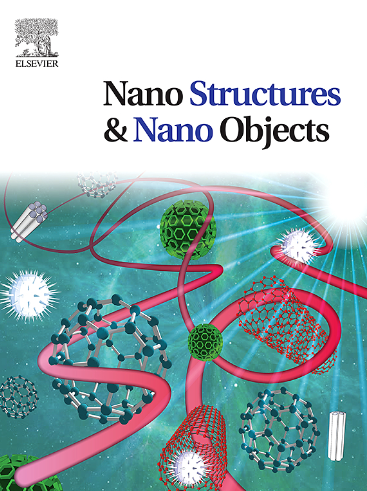Synthesis of MWCNTs for successive polymeric and nano modification of a Nigerian bitumen, optimization using response surface methodology
IF 5.45
Q1 Physics and Astronomy
引用次数: 0
Abstract
Polyethylene (PE) is attractive as a bitumen modifier for several reasons, the most important of which is cost. However, polymeric bitumen is highly sensitive to PE dosages and suffers thermal degradation. To develop a tougher, more ductile crack-resistant binder, a ternary mixture was formulated using PE-modified binder and Multi-Wall Carbon Nanotubes (MWCNTs). The conventional properties of PE-modified bitumen were optimized using a mixture design and Response Surface Methodology (RSM). MWCNTs (0.1 – 0.3 wt%), mixing time (20 – 40 min) and speed (1000 – 15000 rpm) were considered for ternary modification at 140 °C. The softening and penetration points as well as ductility were used to determine the best mix. MWCNT was synthesized using a carbon vapour deposition method and characterized using Transmission Electron Microscopy (TEM), which indicates cylindrical-shaped CNT with numerous walls; Thermogravimetric Analysis (TGA) indicates crystalline graphitic carbon with a weight loss of 25.96 %; X-ray Diffraction (XRD), which indicates graphene-like layers of tube walls at 2θ values of 25.89° and 44.53°. Brunauer-Emmett Teller (BET) shows surface area, pore size and pore volume of 0.62 m2/g, 15.91 nm and 0.00362 cm3/g, respectively. The developed models for the modified bitumen are predictive (R2 greater than or equals to 0.94). The optimum mix design for polymeric bitumen was 4.07 wt% PE, and 95.83 wt% bitumen and 0.1 wt% MWCNT, 1500 rpm mixing speed and 37.7 min for the ternary bitumen. The relatively small absolute relative error between experimental and simulation indicated the reliability of the final models with a combined desirability of 0.77 – 0.87.
求助全文
约1分钟内获得全文
求助全文
来源期刊

Nano-Structures & Nano-Objects
Physics and Astronomy-Condensed Matter Physics
CiteScore
9.20
自引率
0.00%
发文量
60
审稿时长
22 days
期刊介绍:
Nano-Structures & Nano-Objects is a new journal devoted to all aspects of the synthesis and the properties of this new flourishing domain. The journal is devoted to novel architectures at the nano-level with an emphasis on new synthesis and characterization methods. The journal is focused on the objects rather than on their applications. However, the research for new applications of original nano-structures & nano-objects in various fields such as nano-electronics, energy conversion, catalysis, drug delivery and nano-medicine is also welcome. The scope of Nano-Structures & Nano-Objects involves: -Metal and alloy nanoparticles with complex nanostructures such as shape control, core-shell and dumbells -Oxide nanoparticles and nanostructures, with complex oxide/metal, oxide/surface and oxide /organic interfaces -Inorganic semi-conducting nanoparticles (quantum dots) with an emphasis on new phases, structures, shapes and complexity -Nanostructures involving molecular inorganic species such as nanoparticles of coordination compounds, molecular magnets, spin transition nanoparticles etc. or organic nano-objects, in particular for molecular electronics -Nanostructured materials such as nano-MOFs and nano-zeolites -Hetero-junctions between molecules and nano-objects, between different nano-objects & nanostructures or between nano-objects & nanostructures and surfaces -Methods of characterization specific of the nano size or adapted for the nano size such as X-ray and neutron scattering, light scattering, NMR, Raman, Plasmonics, near field microscopies, various TEM and SEM techniques, magnetic studies, etc .
 求助内容:
求助内容: 应助结果提醒方式:
应助结果提醒方式:


